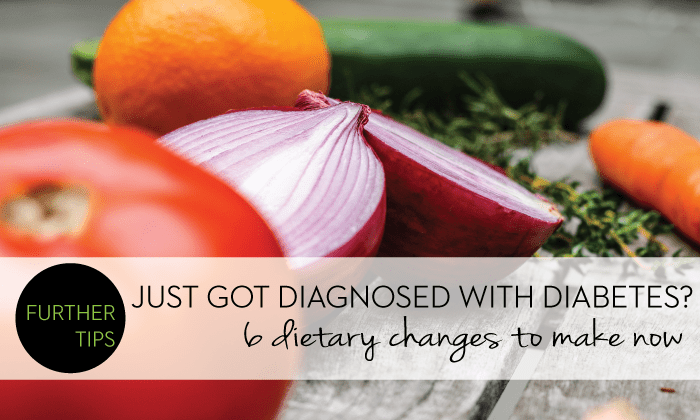Just Got Diagnosed with Diabetes? 6 Diet Changes to Make Now

You’ve just gotten the shock of your life! The doctor said the words you’ve either been dreading all along or has taken you by surprise: you have diabetes, type 2.
Now what?
First, know that you are not alone. Second, there is a ton of information out there, become an expert. Knowledge is power! Know that you can get better - you can manage and even reverse your type 2 diabetes through dietary and lifestyle changes. At Further Food, we’ve put together 6 steps you should take right now to change your diet.
1. Ditch the Sugary Drinks. Controlling your blood sugar level is the single most important way you can prevent complications from diabetes, like damage to your kidneys, blood vessels and eyes. Soda, fruit juice, “health” waters, and sports drinks provide little if any nutrients and will deposit tons of sugar straight to your bloodstream. Try our Orange and Berry Infused Water when you need a little added flavor, but otherwise, water’s the winner, drink it up.
2. Say Hello to Whole Grains. Diabetes doesn’t mean never eating carbs again. Substitute brown rice and whole-grain pastas and breads for the white stuff you’ve been eating. It’s a great way to get your carb fix but still stay on track, as the fiber can help control blood sugar. There's many delicious options to try, such as this Chicken Wild Rice Stir-fry and this Mushroom, Arugula, Quinoa Bowl. In time you’ll probably begin to prefer the depth of texture and taste you’ll be getting from the complex varieties of carbs and wonder what took you so long!
3. Learn to Count to 15 (grams that is). Most diabetes guidebooks advise that you become familiar with what 15g carb servings of foods look like ( ½ cup oatmeal, ½ cup beans, 1 slice of bread, 1 small piece of fruit). By getting to know 15g carb servings of your favorite foods, carb counting will become a breeze. And for an average person, it is recommended to try 45-60g of carbs per meal (three to four 15g servings), and seeing how that affects your blood sugar. For fool-proof information and ways to become familiar with how it works, the American Diabetes Association is your go to source.
4. Eat smaller and more often. One way to keep blood sugar steady is to eat your carbs throughout the day at evenly spaced times and amounts. Ideally you should be having 5 small meals a day. You might have 45g for breakfast, 15g at a midday snack, 30g for lunch, another 15g for an afternoon snack...you get the picture. Our No-Bake Four Ingredient Granola Bar is a great example of a mid-afternoon 15g carb snack that is filling and nutritious. Smaller meals can help stave off binging by stabilize your hunger, which may have a positive effect on your weight as well!
5. Become your own favorite chef. Cooking for yourself is a great way to really know what you’re putting into your body and controlling your blood sugar. When you make your own food, like toasting a slice of whole wheat bread, whipping up some eggs and cutting up fruit for breakfast, you’ll know that you’ve had pretty close to 30 grams of carbs. How much easier is that than just guessing what was in that store bought pasta dish and soup you just had? Click here for a collection of all our diabetes friendly recipes.
6. Lastly, know thyself! And by that we mean, know what your blood sugars are by checking, checking, checking, at least once after waking up, post breakfast, pre and post lunch, pre dinner and before bed. Once you get to know which foods cause you to have blood sugar spikes, and at what times of the day, you’ll be able to make modifications and just might be able to lessen the pesky finger pricking. But for now, own it! You are a walking encyclopedia of your numbers.
Reviewed by Mary Opfer, MS, RD, CDN
Note: PLEASE consult with your doctor before making any changes to your diet or medications. The material on this site is provided for educational purposes only, and is not to be used for medical advice, diagnosis or treatment.
























